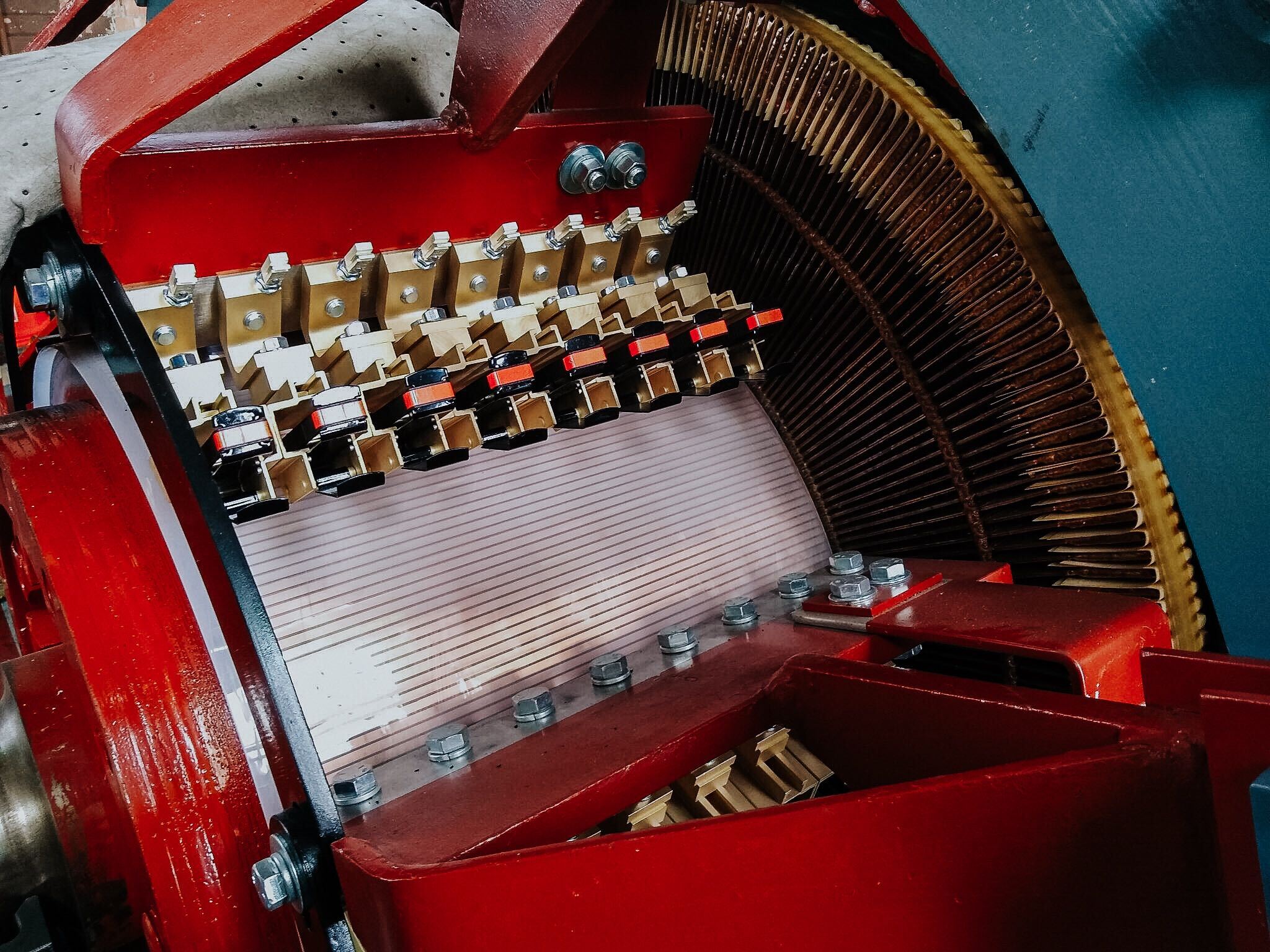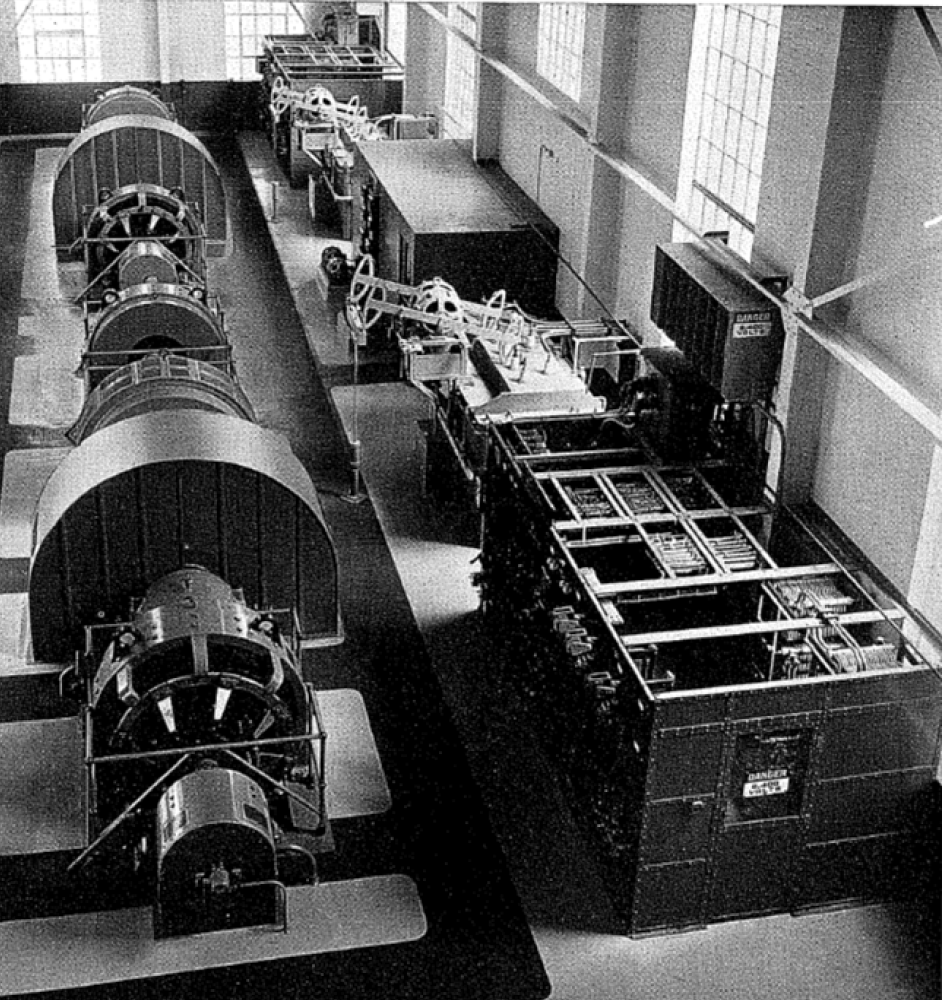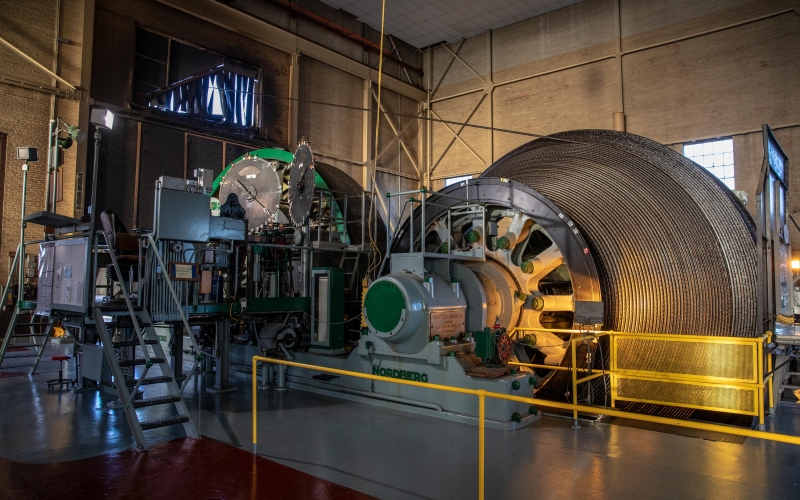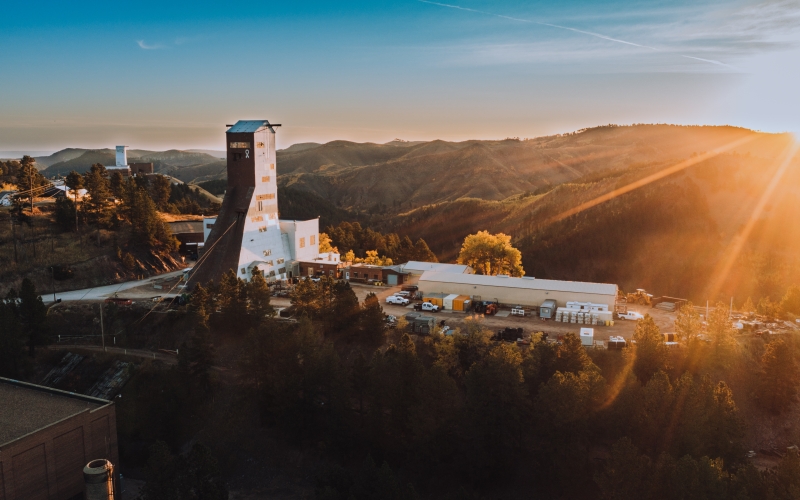
A newly refurbished DC generator is hoisted along the MG set room of the Yates Hoist Building. Pictured in the background is the Yates Ore MG Set.
Crews recently completed refurbishing the Yates Cage Motor-Generator (MG) Set. This MG Set converts electricity from alternating current (AC) into direct current (DC) to power the Yates Cage Hoist and move the cage conveyance throughout the mile-deep Yates Shaft.
The multi-phase project began in June 2020. Elite Industrial, LLC, a contracting company based in Gillette, WY, began the disassembly, transport, and off-site refurbishment of major components including the AC motor, DC generators, DC exciter, and pedestal mounted sleeve bearings. Work completed in December 2020, when the Yates Cage MG Set was reassembled and commissioned. Throughout the project, DC power was drawn from the Yates Ore Hoist MG Set to maintain operations in the Yates Shaft.
"This is a very important accomplishment for Sanford Lab, as the Yates Cage MG Set is the workhorse that allows access to the Davis Campus and levels in between," said William McElroy, operations program manager at Sanford Lab. "It’s a true testament to the ability of our staff and subcontractors that have been involved in this refurbishment. There aren’t too many pieces of decades old equipment in the country that are relied upon as much as this hoist and MG set."

The most challenging part of the undertaking? Refurbishing equipment that was designed and constructed nearly a century ago for mining operations at Homestake Gold Mine (Homestake).
“The most interesting part was working with a design and components that are based on 1930’s technology,” said Cory Pritchard, electrical engineer at Sanford Lab who managed the project.

The vintage machinery has withstood the test of time, and its continued use is a testament to the innovations of its designers. When the Yates Shaft was “sunk” in the 1930s, engineers knew they would need an immense amount of electricity to power the hoist system. Energy is delivered to the Yates Hoistroom as alternating current (AC), but direct current (DC) is needed to power this massive machinery.
“When a cage is resting a mile deep in the shaft, it takes an immense amount of energy to begin lifting it up,” said Paul Bauer, electrical project engineer at Sanford Lab. “The power-torque characteristics of a DC motor are better suited for this job. The motor can begin slowly turning from a dead stop, while still providing sufficient torque. It is the MG Sets in the hoist rooms that make using DC drive motors possible.”
An entire room in the Yates Hoist Building is dedicated to converting AC power to DC power. Two nearly identical motor-generator sets, one for each of the hoists in the Yates Hoist Building, run constantly inside this room. On the Yates Cage MG set, a 1,000 horsepower motor uses incoming alternating current (AC) at 2,300 volts to rotate a large shaft. Along this rotating shaft are two 1,000-kilowatt direct current (DC) generators that create between 0-600 volts and powers two 1,250 horsepower DC motors on the Yates Cage Hoist.
These hoist motors make the gears on the drums go around, raising and lowering the conveyance in the shaft. This process makes travel throughout the underground levels of the facility possible. A 50-ton flywheel is also connected to the rotating shaft and is used to store and deliver mechanical power to the DC generators for times when the hoist needs additional power for hoisting.
“The flywheel is incredibly important, because it stores excess energy created by the DC generator. When you start moving the hoist from a complete stop, you need a whole bunch of power in a short amount of time to get it moving,” Bauer said. “That initial burst of energy might use 3,000 horsepower over a very short time. The flywheel supplies that excess energy.”
“It’s a feat of engineering, to be sure,” noted Martin Brosnahan, an electrician at Sanford Lab who worked on the recent refurbishment. “It’s astounding how engineers in the 1930s were able to create such a reliable, durable system that we still operate today.”

